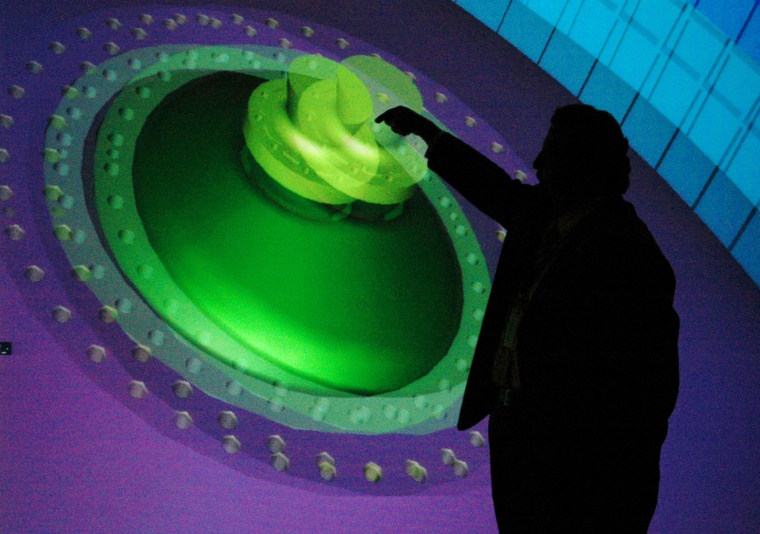NASA unveiled a beefed-up redesign of a proposed moon rocket Wednesday, saying the Ares 5 spacecraft that is to carry astronauts to the lunar surface in 12 years will be around 38 stories tall and carry a heftier load than originally planned.
The rocket is to be about 20 feet (6 meters) longer than a previous design and have six main engines at its base, instead of five. Engineers said they also decided to enlarge the twin solid-rocket boosters that will be bolted to its side so it can hold more fuel and carry more supplies and equipment than first envisioned.
Steve Cook, manager of the Ares project office at the Marshall Space Flight Center, said the new design would make Ares 5 capable of carrying about 15,600 pounds (7 metric tons) more than the original concept.
The Ares 5 was first planned to be 361 feet long, or about the size of the original Saturn 5 moon rocket. But Cook said the redesigned Ares 5 will be 381 feet (116 meters) long — or roughly as tall as a 38-story building.
Part of the Constellation program, the rocket will be capable of carrying four astronauts, a lunar lander and other equipment to a landing anywhere on the moon. In all, NASA said it expects Ares 5 would be able to send more than 156,600 pounds (71 metric tons) of cargo to the moon and, someday, Mars.
"We've looked at over 1,700 different Ares concepts," Cook told reporters at a briefing.
He added that officials balanced cost, safety, reliability and performance factors in creating the new design.
The changes were announced after a nine-month study to determine if NASA could meet its goal of returning to the moon. In a statement, Constellation program manager Jeff Hanley said the review showed astronauts can be back on the moon by 2020.
"This extensive review proves we are ready for the next phase: taking these concepts and moving forward," he said.
Cook said major work on Ares 5 would begin in 2010 after the space shuttle is retired.
Unlike the Apollo program, in which the mammoth Saturn 5 rocket lifted astronauts and all their equipment into orbit at once, the Constellation program plans a two-step process for getting aloft.
Astronauts will ride into orbit in a capsule aboard a reusable rocket called the Ares 1. Once there, they will dock with an orbiting Earth departure stage that was carried by an Ares 5 rocket and head to the moon with a lunar lander, cargo and supplies.
NASA unveils new moon rocket design
NASA unveiled a beefed-up redesign of a proposed moon rocket Wednesday, saying the Ares 5 spacecraft will carry a heftier load than originally planned.

/ Source: The Associated Press